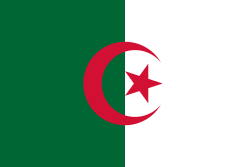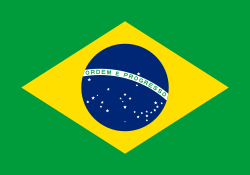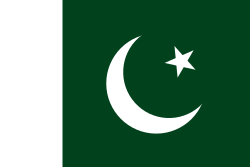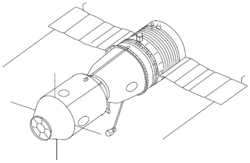Apollo-Sojuz-testprojektet
| Apollo-Sojuz | |
| Statistik för uppdraget | |
|---|---|
| Farkostens namn | Apollo och Sojuz 19 |
| Anrop | Apollo och Союз (Sojuz - "union") |
| Varaktighet | Apollo: 9 dagar, 1 timme, 28 minuter, 24 sekunder Sojuz: 5 dagar, 22 timmar, 30 minuter, 54 sekunder |
| Uppskjutning | |
| Raket | Apollo: Saturn IB Sojuz: Sojuz |
| Uppskjutning | Apollo: 15 juli 1975 19:50:00 UTC, Kennedy Space Center, LC-39B Sojuz: 15 juli 1975 12:20:00 UTC, Kosmodromen i Bajkonur |
| Landning | |
| Landning | Apollo: 24 juli 1975 21:18:00 UTC 21°52′N 162°45′V / 21.867°N 162.750°V Sojuz: 21 juli 1975 10:50:00 UTC 57°N 67°Ö / 57°N 67°Ö |
| Omloppsbana | |
| Varv runt jorden | Apollo: 148 st Sojuz: 96 st |
| Distans | Apollo: ~5 990 000 km Sojuz: ~3 900 000 km |
| Dockning | |
| Dockning | 17 juli 1975, 16:19:09 UTC |
| Ur dockning | 19 juli 1975, 15:26:12 UTC |
| Tid dockad | 1 dag, 23 timmar, 7 minuter, 3 sekunder |
| Besättning | |
| Besättning | Apollo: Thomas P. Stafford (4), Vance D. Brand (1), Deke Slayton (1) Sojuz: Aleksej Leonov (2), Valerij N. Kubasov (2) |
 öv: Stafford, Leonov nv: Slayton, Brand, Kubasov | |


Apollo-Sojuz-testprojektet (ASTP) (ryska: Экспериментальный полёт) var den första dockningen mellan två rymdfarkoster från de båda supermakterna Sovjetunionen och USA. I pressen kallades detta för Handslaget i rymden och Toppmötet.
Bakgrunden
Sedan 1957 hade då båda supermakterna kastats in i en rymdkapplöpning om vem som var först med att genomföra olika saker i rymden. Sovjetunionen var först med den första artificiella satelliten i rymden 4 oktober 1957, första varelsen i rymden 3 november 1957, första artificiella objektet att träffa månen 12 september 1959 första människan i rymden 12 april 1961, första rymdpromenaden 18 mars 1965 medan USA var först med vetenskaplig rymdsond 31 januari 1958, första kommunikationssatelliten 10 juli 1962, första vädersatelliten 1 april 1960, först med att runda månen 21 december 1968 och första månlandningen 20 juli 1969.
Tidigare samarbeten
Det första samarbetet i rymden mellan de båda supermakterna kom i juni 1962. Trots sina ambitioner av de båda supermakternas rymdfartsansvariga så var det blygsamt med samarbeten på 1960-talet. När de båda länderna hade kommit så långt i sina rymdprogram som tredje generationens rymdfarkoster Apollo och Sojuz hade man fortfarande inte kommit någonstans med samarbetet inom den bemannade rymdfarten.
Första steget
Genom förbättrade relationer mellan de båda supermakterna och utökade samarbeten inom andra områden inom rymdfarten startade ett samarbete under 1969 angående bemannade rymdfarkoster. Man ville få fram ett dockningssystem som var fullt kompatibelt så att de båda nationernas rymdfarkoster skulle kunna docka med varandra.
Nästa steg
De båda länderna tillsatte gemensamma arbetsgrupper som såg över de olika ländernas system för dockning och framdrivning i rymden. I oktober 1970 enades man om att låta dessa grupper arbeta fram lösningar på de problem som rådde för att kunna docka i rymden mellan deras olika farkoster.
ASTP tar sin form
Under toppmötet mellan de båda supermakternas ledare i maj 1972 skrev man avtal om att genomföra en dockning i rymden. Dockning skulle ske under 1975. Konstantin Busjujev blev utsedd till teknisk ansvarig i Sovjetunionen och Glynn Lunney blev USA:s dito.
Generalrepetition
Som ett genrep flög ryssarna Sojuz 16, mellan den 2 och 8 december 1974. Anatolij Filiptjenko och Nikolaj Rukavisjnikov prövade en atmosfär med lägre tryck och högre syreinnehåll än vanligt (40 %). Apollo-farkosterna hade en 100 % syre-atmosfär, och ett lägre tryck än Sojuz-farkosterna (en tredjedel av det normala lufttrycket)[1]. En docking module (anpassning och luftsluss) på ASTP gjorde det möjligt att besöka den andra farkosten, men det krävde en prebreathing time för att undgå dykarsjuka. Denna tid kunde sättas ned om atmosfärerna var mera lika.
Rymdfararna
Thomas P. Stafford, Vance D. Brand och Deke Slayton sköts upp med Apollo-farkosten, som för övrigt felaktigt brukar benämnas Apollo 18. Aleksej Leonov och Valerij N. Kubasov sköts upp med Sojuz 19-farkosten. Eftersom Saturn IB-raketen var överdimensionerad för Apollo-flygningar till låga omloppsbanor, valdes en banlutning på 51° - idealisk för uppskjutningar från Kosmodromen i Bajkonur, men energislukande från Kennedy Space Center.
Asteroid
Asteroiden 2228 Soyuz-Apollo är uppkallad efter projektet[2].
Referenser
- ^ Apollo-Soyuz Command Module Arkiverad 17 juni 2010 hämtat från the Wayback Machine. California Science Center
- ^ Schmadel, Lutz D. (2007). Dictionary of Minor Planet Names – (2228) Soyuz-Apollo. Springer Berlin Heidelberg. sid. 181. ISBN 978-3-540-29925-7. https://link.springer.com/referenceworkentry/10.1007/978-3-540-29925-7_2229. Läst 13 oktober 2017
| |||||||||||||||||||||||||||||||||||||||||||
| |||||||||||||||||||||||||||||||||||||||||||||||||||||||||||||||||||||||||||||||||||||||||
| ||||||||||||||||||||||
| |||||||||||||||||||||||||||||||||||||||
Media som används på denna webbplats
The Flag of Europe is the flag and emblem of the European Union (EU) and Council of Europe (CoE). It consists of a circle of 12 golden (yellow) stars on a blue background. It was created in 1955 by the CoE and adopted by the EU, then the European Communities, in the 1980s.
The CoE and EU are distinct in membership and nature. The CoE is a 47-member international organisation dealing with human rights and rule of law, while the EU is a quasi-federal union of 27 states focused on economic integration and political cooperation. Today, the flag is mostly associated with the latter.
It was the intention of the CoE that the flag should come to represent Europe as a whole, and since its adoption the membership of the CoE covers nearly the entire continent. This is why the EU adopted the same flag. The flag has been used to represent Europe in sporting events and as a pro-democracy banner outside the Union.bendera Indonesia
Flag of Iran. The tricolor flag was introduced in 1906, but after the Islamic Revolution of 1979 the Arabic words 'Allahu akbar' ('God is great'), written in the Kufic script of the Qur'an and repeated 22 times, were added to the red and green strips where they border the white central strip and in the middle is the emblem of Iran (which is a stylized Persian alphabet of the Arabic word Allah ("God")).
The official ISIRI standard (translation at FotW) gives two slightly different methods of construction for the flag: a compass-and-straightedge construction used for File:Flag of Iran (official).svg, and a "simplified" construction sheet with rational numbers used for this file.
Flag of Israel. Shows a Magen David (“Shield of David”) between two stripes. The Shield of David is a traditional Jewish symbol. The stripes symbolize a Jewish prayer shawl (tallit).
Soyuz-TM spacecraft. Compare the antennas on the orbital module to those on Soyuz-T. Differences reflect the change from the Igla rendezvous system used on Soyuz-T to the Kurs rendezvous system used on Soyuz-TM.
MAVEN at Mars, Artist's Concept. This artist's concept depicts NASA's Mars Atmosphere and Volatile EvolutioN (MAVEN) spacecraft near Mars. MAVEN is in development for launch in 2013 and will be the first mission devoted to understanding the Martian upper atmosphere. The mission's principal investigator is Bruce Jakosky from the Laboratory for Atmospheric and Space Physics at the University of Colorado.
The goal of MAVEN is to determine the role that loss of atmospheric gas to space played in changing the Martian climate through time. MAVEN will determine how much of the Martian atmosphere has been lost over time by measuring the current rate of escape to space and gathering enough information about the relevant processes to allow extrapolation backward in time.
NASA Goddard Space Flight Center in Greenbelt, Md. manages the project and will also build some of the instruments for the mission. In addition to the principal investigator coming from CU-LASP, the university will provide science operations, build instruments, and lead education/public outreach. Lockheed Martin of Littleton, Colo., is building the spacecraft and will perform mission operations. The University of California-Berkeley Space Sciences Laboratory is also building instruments for the mission. NASA's Jet Propulsion Laboratory, Pasadena, Calif., will provide navigation support, the Deep Space Network, and the Electra telecommunications relay hardware and operations.
For more information about MAVEN, visit www.nasa.gov/maven.Apollo-Soyuz Test Project (ASTP) Soyuz. The APAS-75 docking unit is located at left.
The Soyuz TMA-04M spacecraft is seen after being rolled out by train to the launch pad at the Baikonur Cosmodrome in Kazakhstan, May 13, 2012. The launch of the Soyuz spacecraft, with Expedition 31 Soyuz Commander Gennady Padalka, Flight Engineer Sergei Revin of Russia and NASA Flight Engineer Joe Acaba, is scheduled for 9:01 a.m., May 15 (Kazakhstan time).
AST-05-275: Cosmonaut Aleksey Leonov displays drawing of Astronaut Thomas Stafford.
A replica of Sputnik 1, the first artificial satellite in the world to be put into outer space: the replica is stored in the National Air and Space Museum.
The Apollo–Soyuz Test Project crew. From left to right: Deke Slayton, Thomas Stafford, Vance Brand, Alexey Leonov and Valeri Kubasov.
Soyuz-A manned spacecraft concept (1963). It was to have been part of the Soyuz A-B-C circumlunar complex.








































